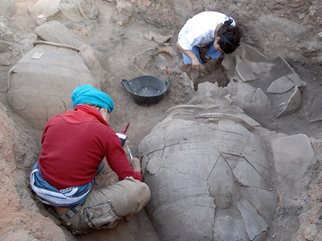Playing is Learning
History of Archeological Excavations by AUB
October 11th, 2016
| Ads | ||
|
Play the Challenge
|
||
|
A New Word is Coined A new Character is revealed A new Game is Afoot |
An Edutainment Adventure Based on Three Rounds of Investigations
|
|
|
Welcome to the World of PROFESsee™by seeCOSM™ PROFESsee™ is my title. I am the perpetual learner, in pursuit of knowledge, wisdom and truth. I derived my name from professor |
 |
|
|
Ever since I watched many Indiana Jones franchise movies, my idea of archeology has always been funny. I always see them as chasing the “lost head of Horru” or something equally awkward. Anyways, the American University of Beirut (AUB) has been involved with archeological excavations, mostly in Lebanon and Syria that have yielded lots of insight into the past (although nothing Indiana Jones-ish). This has been largely facilitated by the department of History and Archeology of the university, as well as the Archeological museum of the university, even though some projects were also completed with other partners. As was the case with the Beirut Souks excavation done in partnership with Archaeological Collaboration for Research and Excavation (ACRE). One of the earliest excavation attempts by the AUB was the Tell El-Ghassil in the Beqaa region. The excavation campaigns for this project totaled 12 – with the first carried out in 1956, and the last in 1974 – and were conducted under the leadership of Dr. Dimitri Baramki and Dr. Leila Badre. The excavation site revealed the area was an agrarian site – a land that was cultivated for food – which was deduced from the eleven archaeological levels from the period between 1800 and 600 BC. Another important excavation in AUB was the Tell Kazel carried out between 1985 and 2000. It was carried out in partnership with the Syrian directorate of museums under the leadership of AUB’s Leila Badre. The site contained artifacts, potteries/ceramics and remains that prove there were settlements and transitions from the Bronze Age to the Iron Age, as well as evidence of Hellenistic occupation due to the cemetery (imagine Casper flying out of the graves, brrr!) found on the site. Recent excavations include the BEY 003, BEY 012 and BEY 215. These are just code names for the excavation exercises. BEY 003 also known as the ancient Tell, was carried out to find the “Biruta” an old town referenced in the Amarna letters. However, what was found on this site was Egyptian objects, remains and artifacts referring to Hellenistic origins as well as the third millennium BC. The BEY 012 excavation on the site of the Saint Georges Cathedral of the Greek Orthodox, carried out in 2001 revealed 5-6 successive churches, as well as Hellenistic and post-Hellenistic pointing remains and evidence. The BEY 125 carried out on the an-Nahar building revealed occupation from the Persian to the Byzantine eras has shown by the Byzantine mosaic found on the site. Other notable excavations include the Beirut Souks which revealed the site being occupied as far back as the Ottoman Empire and the early Hellenistic era. Can you Trace the Archeological Excavations by AUB? Image courtesy of: https://www2.uniroma1.it/photogallery/vedi_e.php?cod=1102 |
||
Latest News / Events
E-mail [email protected]
The Professee™ Newsletter Beta
http://www.seecosm.com/
http://www.seecosm.com/

